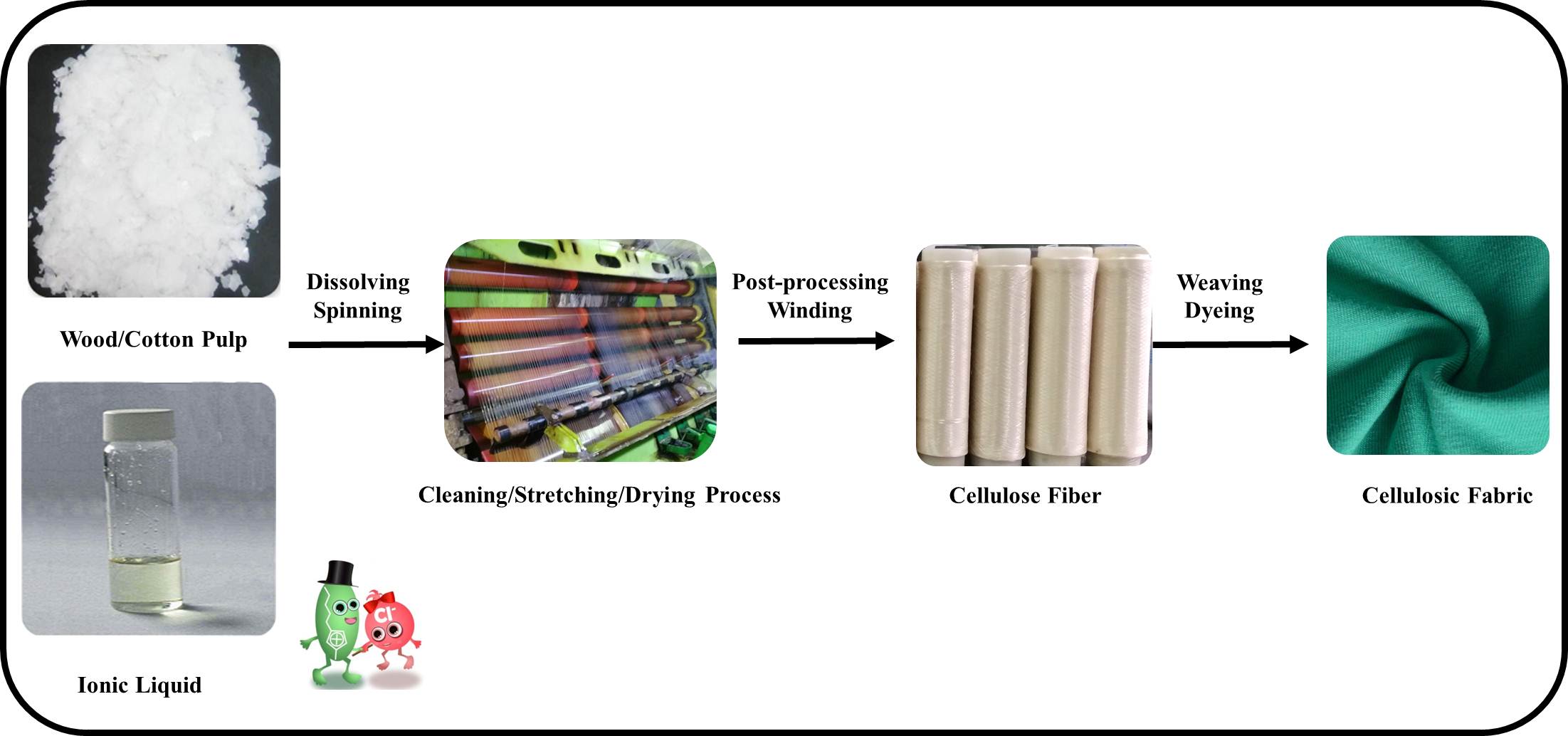Cellulose is the most abundant renewable polymer in the world with an annual output of 90*109 tons, which can be utilized with high value to produce regenerated fibers. Viscose fiber is one kind of regenerated cellulose fibers with the essence of cotton and quality of silk. However, the viscose process requires multiple manufacturing steps including chemical derivatization process using high aggressive solvents such as sodium hydroxide and carbon disulfide. This makes the process more expensive and environmentally hazardous. Therefore, we are in urgent need of a green technology to replace the viscose process.
A new technology, producing regenerated cellulose fibers by using ionic liquids (ILs) as the solvent was invented by the Institute of Process Engineering (IPE) of the Chinese Academy of Sciences. ILs belongs to a new generation of solvents for cellulose, boasting chemical and thermal stability, high decomposition points, low vapor pressures, low flammability, excellent recoverability, and reusability. Researchers of IPE have made breakthroughs in several key scientific issues and technical problems, such as designing novel functional ILs to provide cellulose solution, optimizing spinning technology, efficient recycling of ILs. A set of 5L/batch dry-jet wet-spinning device was designed and set up, and regenerated cellulose fibers with good performance were successfully produced.
Unlike the viscose process, the ILs can dissolve cellulose in one-step without chemical derivatization process. The regenerated cellulose fiber is 90% similar to natural cellulose. The new technology was approved by Xinxiang Chemical Fibers Co. Ltd. Cooperative agreement was signed one month ago. Now, the design of the demonstration device is under way. Once the project is successfully industrialized, it is expected to subvert the traditional viscose process, which will bring great social benefits and bring about an evolution of green spinning technology in the world.

Figure 1 Regenerated cellulose fibers using ionic liquids as the solvent (Photo by NIE Yi)
Media Contact:
LI Xiangyu
International Cooperation Office, Institute of Process Engineering, Chinese Academy of Sciences, Beijing 100190, P. R. China.
E-mail: xiangyuli@ipe.ac.cn
Tel: 86-10-62551358
 Search
Search




 京公网安备110402500047号
京公网安备110402500047号